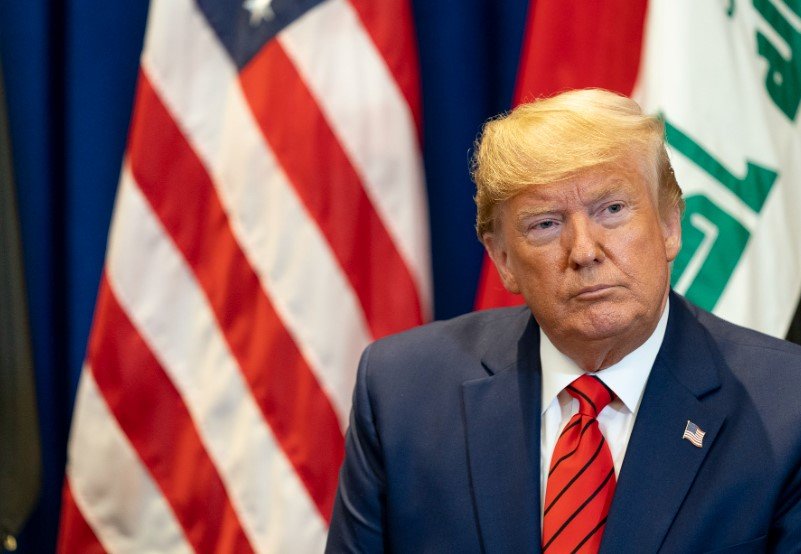As Modi speaks at BRICS summit, Trump ratchets up pressure, calling the bloc a threat to US economic interests
Donald Trump’s latest post on Truth Social landed with a thud in foreign capitals.
With the BRICS summit underway in Rio de Janeiro and leaders of major emerging economies gathered under one roof, the U.S. president issued a warning that felt like a shot across the bow: “Any Country aligning themselves with the Anti-American policies of BRICS will be charged an ADDITIONAL 10% Tariff. There will be no exceptions.”
Short, all-caps, and bristling with economic firepower, the post signals the most aggressive rhetoric yet from Trump on BRICS, a group that now includes Brazil, Russia, India, China, South Africa—and a handful of new invitees like Iran and Egypt. And the timing? Couldn’t be sharper.
Trump’s all-in strategy: Tariffs or bust
Trump has always had a thing for tariffs. During his first presidency, he slapped duties on everything from steel to solar panels. But this time, the threat isn’t about trade imbalances or factory jobs. It’s about alliances.
To Trump, BRICS isn’t just a trade forum. It’s a rival club—a bloc of rising powers that challenge America’s post-WWII dominance.
The language in his post suggests he sees BRICS as a kind of economic NATO, except on the other side. By threatening a blanket 10% tariff on countries aligning with it, Trump is drawing a new line in the geopolitical sand.
What’s different now? He’s offering no loopholes. Not even for allies.

Modi walks a tightrope in Rio
Indian Prime Minister Narendra Modi, who spoke at the summit just a day before Trump’s post, avoided directly addressing BRICS’s political posture. Instead, he stuck to a script India knows well—terrorism.
In a speech referencing the April 22 attack in Pahalgam, where 26 civilians died, Modi called terrorism “a brutal and cowardly assault on our soul, identity, and dignity.” The comment drew applause from fellow leaders, even those who have, at times, hesitated to explicitly name Pakistan.
But here’s where it gets tricky: India has deep ties with the United States, but it’s also a founding BRICS member.
Modi’s team reportedly received Trump’s tariff post just minutes before a scheduled bilateral with South Africa. The timing wasn’t lost on Indian officials.
One senior diplomat in Rio told us, “We’re trying to make sure our strategic autonomy doesn’t look like strategic ambiguity.”
That’s a hard needle to thread.
What’s the real target here?
On paper, the new BRICS agenda focuses on financial reform and multipolar governance. But behind the scenes, it’s clear the bloc is shifting gears. There’s talk of creating a BRICS currency. Of ditching the dollar in oil trades. Of offering an alternative to the World Bank.
For Trump, all of that smacks of anti-Americanism.
His post didn’t name specific nations, but some observers believe the warning was pointed at:
-
India, for playing both sides
-
Brazil, for entertaining China-led trade proposals
-
Saudi Arabia and UAE, who’ve attended BRICS+ sessions despite long-standing ties with the U.S.
A Washington-based trade analyst said, “This isn’t just about trade deficits. It’s about loyalty. Trump is testing where countries really stand.”
How would this tariff actually work?
That’s where it gets messy.
If implemented, the 10% surcharge would apply to imports from countries that either join BRICS or publicly support its policies. But how does one define “alignment”?
Is a speech at a summit enough? A currency swap? A diplomatic statement?
Even U.S. allies are confused.
To clarify the picture, here’s a look at some BRICS+ nations and their U.S. trade exposure:
| Country | BRICS Role | Annual U.S. Trade Volume (2024 est.) | Potential Tariff Impact |
|---|---|---|---|
| India | Founding member | $190 billion | Moderate to high |
| Brazil | Founding member | $108 billion | High (agriculture-heavy) |
| UAE | BRICS+ invitee | $38 billion | Moderate |
| Egypt | New member | $7.5 billion | Low to moderate |
| South Africa | Founding member | $16 billion | Moderate |
One official at the Commerce Department admitted privately: “It’s unclear how we’re supposed to measure ‘alignment’ in trade policy terms.”
Global response has been mixed, but nervous
Reactions trickled in fast—and quietly.
Brazil’s finance minister called the post “unexpected.” Egypt’s foreign office said it wouldn’t comment on U.S. social media posts. South Africa said it continues to seek “balanced engagement” with all powers.
India’s foreign ministry, meanwhile, offered no public statement. But in Rio, officials scrambled behind closed doors to downplay the drama.
A senior Indian bureaucrat told reporters off-record, “We’re not about to pick sides. India’s diplomacy is built on nuance, not ultimatums.”
In other words, don’t expect Modi to bend quickly. But don’t expect open defiance either.
This is just the beginning
Even by Trumpian standards, this felt bold. A unilateral threat, made over social media, with no Congressional approval or WTO consultation.
Still, markets didn’t panic. Not yet.
The dollar held. Emerging market indices dipped slightly. But traders are waiting to see whether this was a real policy pivot or just more bluster.
In Rio, one European diplomat summed it up perfectly: “Trump has fired the first shot. But we don’t know yet if it’s blanks—or bullets.”
